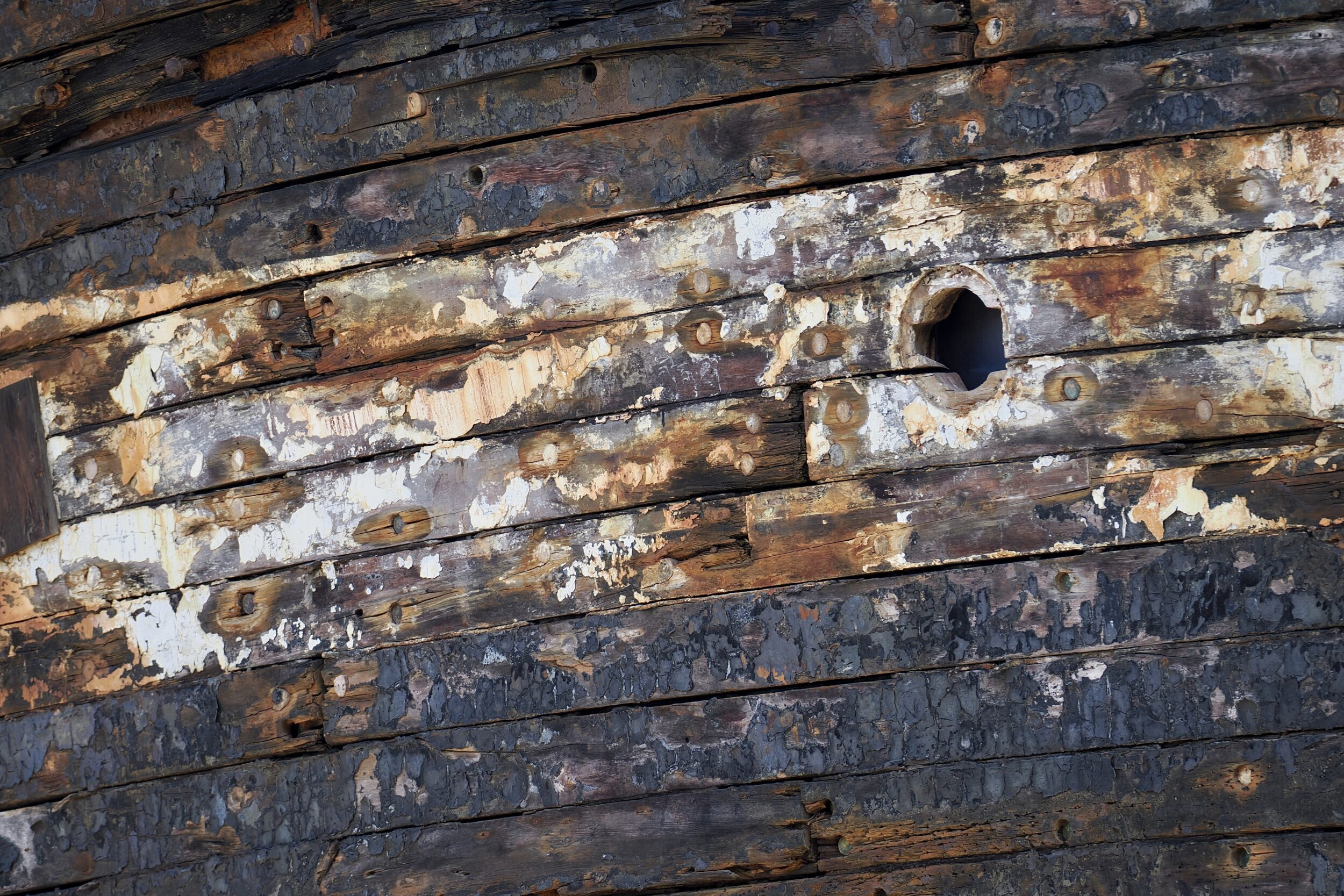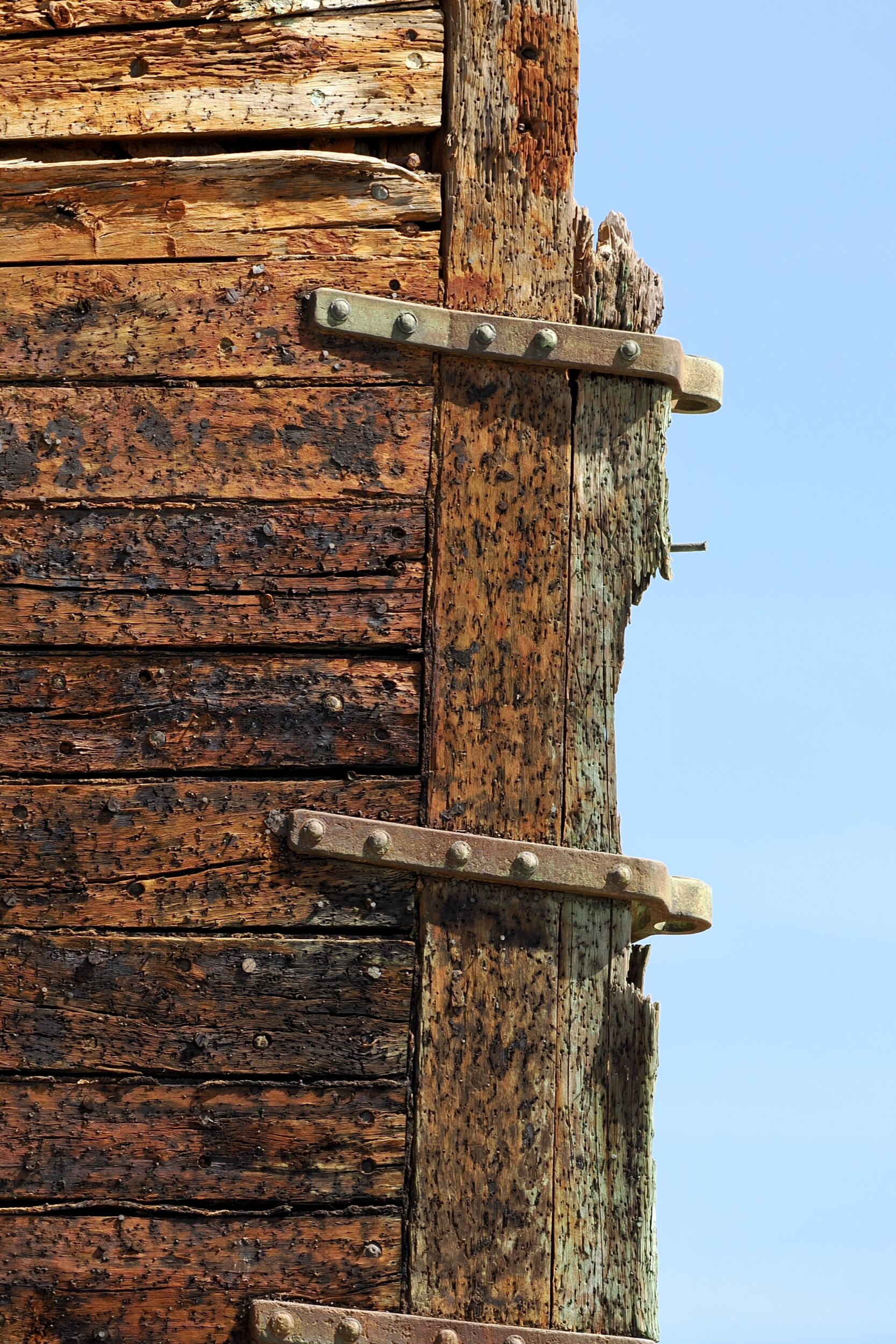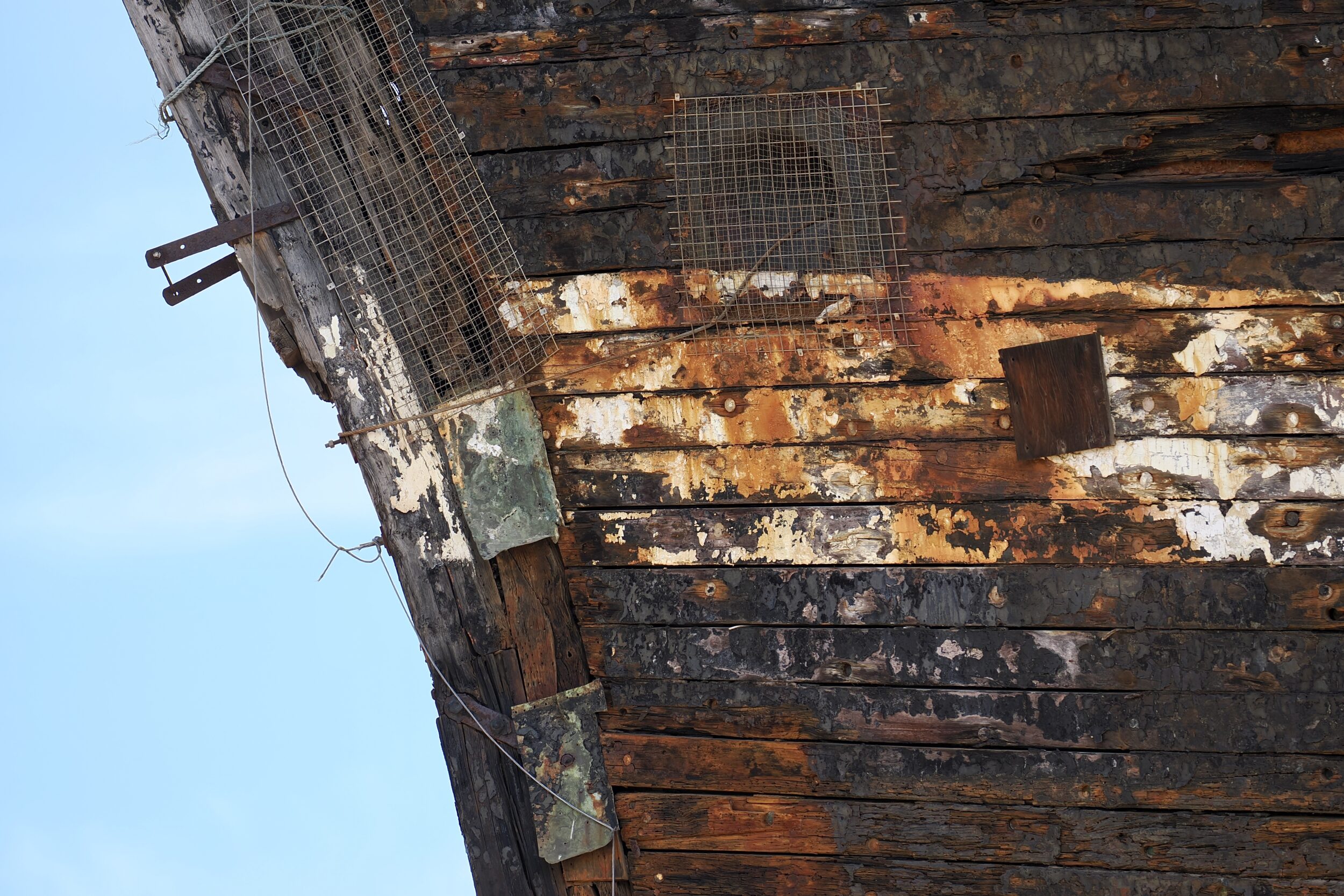Q: what does the “skin” of the world’s oldest such “surviving” clipper ship look like, at age 160 years?
A: have a close look at this post’s photos of the City of Adelaide. (taken in Port Adelaide on 07 March 2024)

Click here for a detailed account of the ship’s extraordinary, convoluted history, from 1864 to 2024. It includes a painting of City of Adelaide in its early, “glory days” (1864-1887), as a very fleet clipper which delivered many “free settlers” to South Australia.
Since 1887, the ship has had many ups and downs – mostly, the latter – and a change of name to HMS Carrick, as a Royal Naval vessel from 1923 to 1948.
It was then decommissioned, and headed for the scrapyard.
However, its historic significance was recognised, and the ship towed to Glasgow, where it became the Royal Naval Volunteer Reserve Club’s headquarters.
Flood damage in 1989 ended that role.
The ship was then moved to a “safer” location on the Clyde, but in 1991, at its moorings, it sank.
In 1992 it was “rescued” by the Scottish Maritime Museum, and moved to a private slipway, near the museum.
Restoration work began, but by 2000 funding had ceased, and the slipway owner’s goodwill had evaporated.
Eviction notice was served, and – again – the scrapyard beckoned.
Various “save this ship” groups formed, in Scotland and in Adelaide.
In 2001 City of Adelaide regained its original name.
For another decade, disputation and uncertainty continued; in short, South Australia came good with “the necessary”, and Scotland/Great Britain did not.
in 2010, despite much “patriotic” resistance, the Scottish Government agreed that City of Adelaide be moved to Adelaide, to be preserved there, as a museum ship.
Since its February 2014 arrival (aboard a cargo ship) in Port Adelaide, a whole lot more uncertainty, disputation and “issues” have ensued…primarily concerning funding, the extent of the “restoration”, the precise site for its final relocation & the preferred method of display.
You can keep abreast of at least some of the ongoing saga via the ship’s website.

This series’ final two chapters both look at 21st century constructions – one in the Port River, the other adjacent to it.
